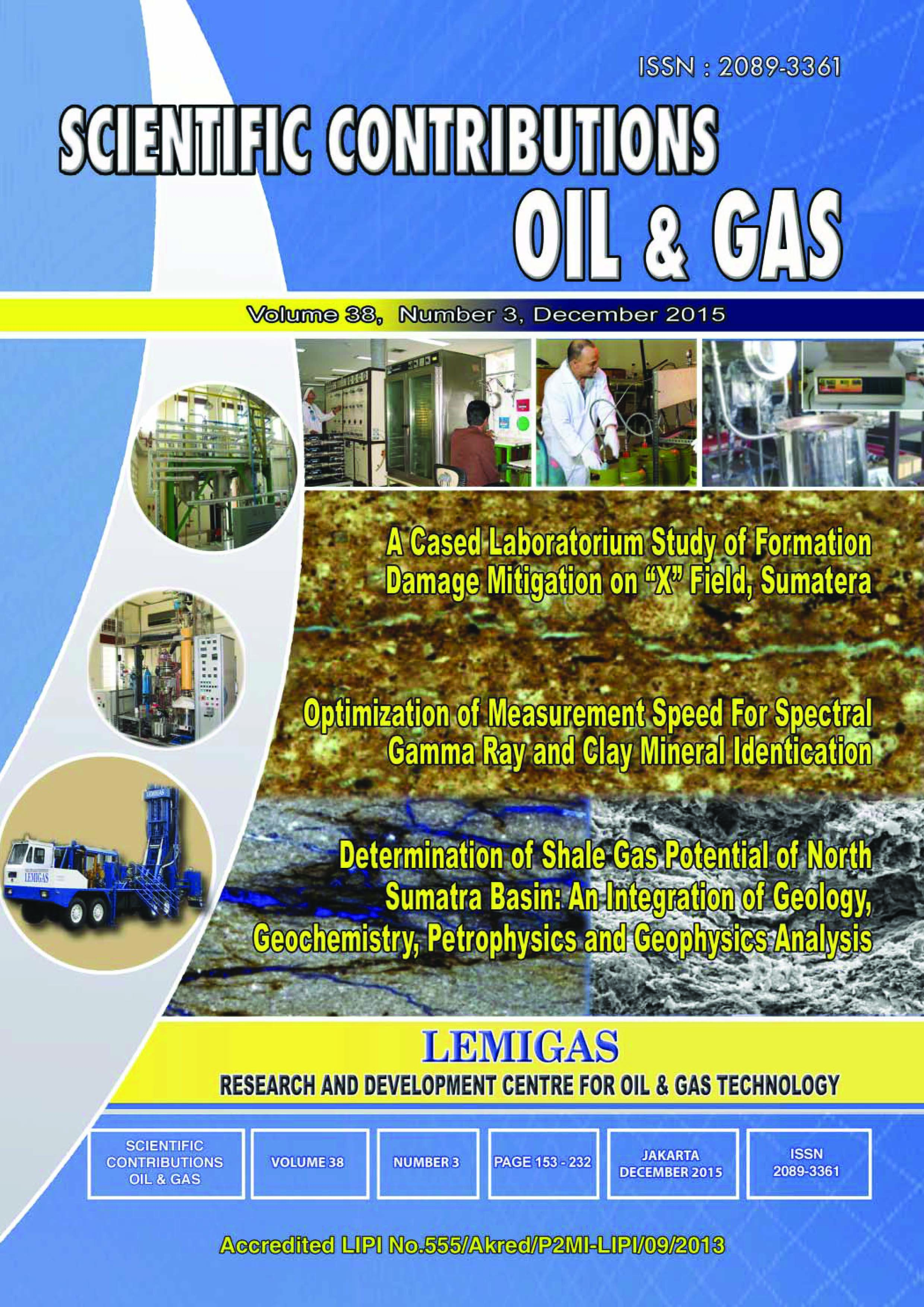A CASE STUDY OF FORMATION DAMAGE MITIGATION ON “X†FIELD, SUMATRA
DOI:
https://doi.org/10.29017/SCOG.38.3.546Keywords:
Formation damage, water injection, disposed produced water, water treatment, water-rock compatibility, fine migration clay, swelling clayAbstract
Formation damage might cause low oil well productivity, therefore it is very important to effectively handle this issue. In fact, every operation in the field-drilling, completion, workover, production and stimulation, is a potential source of formation damage. In this case study, the oil company “A†plan to dispose produced water into Formation B, J, K, D,M. Laboratory tests were performed to investigate the effect of the injection of water into the reservoir formation. The experiment was conducted by measuring water permeability as a function of fluid volume injection. In addition, XRD analysis was also performed on effluent filtrate to support the results. Prior to investigating the sensitivity of reservoir rock to the fluid injection, the samples were injected with fresh water, saline water, produced water collected from Central Injection Facility, and also Filtered CIF Water. The results indicated that all formations were sensitive to fresh water and produced water. Moreover, the use of a filter will improve the water quality. Therefore, the produced water should be treated by using a filter and increasing water salinity. The XRD analysis showed that the potential damage is mostly caused by fine migration clay, however, swelling clay is also present in the small part of formation. The test results will be used for water treatment design, so as to minimize formation damage.
References
American Petroleum Institute Recommended Practice for Core Analysis Procedure, API RP 40, August, 1960.
Beutelspacher Van Der Marel; 1968, â€Atlas of Electrone Microscopy of Clay Mineral and Their Mixturesâ€; Elsevier Publishing Company, Amsterdam-London-New York.
Core Laboratories, Inc., 1972, “Special Core Analysis and Industrial water Technology Manualâ€, April.
Grimm, R.E; 1968, â€Clay Mineralogyâ€; Mc Graw-Hill Book Co; USA.
Hearle,J.W, Sparrow, J.T, and Cross, P.M; 1972, â€The Use of the Scanning Electrone Microscopeâ€; Pergamon Press; Oxford-New York-Toronto-Sidney-Brausweig.
Downloads
Published
Issue
Section
License
Copyright (c) 2015 SCIENTIFIC CONTRIBUTIONS OIL AND GAS (SCOG)

This work is licensed under a Creative Commons Attribution 4.0 International License.
Authors are free to Share — copy and redistribute the material in any medium or format for any purpose, even commercially Adapt — remix, transform, and build upon the material for any purpose, even commercially.
The licensor cannot revoke these freedoms as long as you follow the license terms, under the following terms Attribution — You must give appropriate credit , provide a link to the license, and indicate if changes were made . You may do so in any reasonable manner, but not in any way that suggests the licensor endorses you or your use.
No additional restrictions — You may not apply legal terms or technological measures that legally restrict others from doing anything the license permits.














